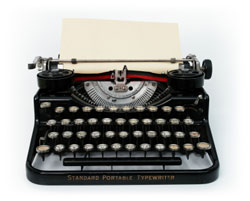By Chandler Harris
With new technological advances in software, hardware and other devices being released almost daily, somebody has to articulate these new and updated technologies to the end-user. That person is the technical writer, a.k.a the technical communicator, who creates a host of documentation to support new technology, products and services.
 Technical writing is an in-demand field and rated one of the top five high-paying, low stress jobs by MSNBC. Technical writers earn a median annual wage of $61,620, with higher-paid professionals earning more than $97,000. They can work from home part- or full-time. Plus, technical writing is among the fastest growing occupations, according to the Bureau of Labor Statistics, with employment expected to grow 18 percent from 2008 to 2018. This is primarily due not only to documentation of new technologies, but also the evolving nature of content available on the Web.
Technical writing is an in-demand field and rated one of the top five high-paying, low stress jobs by MSNBC. Technical writers earn a median annual wage of $61,620, with higher-paid professionals earning more than $97,000. They can work from home part- or full-time. Plus, technical writing is among the fastest growing occupations, according to the Bureau of Labor Statistics, with employment expected to grow 18 percent from 2008 to 2018. This is primarily due not only to documentation of new technologies, but also the evolving nature of content available on the Web.
Breaking In
Although a number of certificate and degree programs are available, many technical communicators enter the field by leveraging their previous knowledge and write about subjects they know. Some even transfer within a company from a technical position to a technical writing position.
"You can come from anywhere and become a technical writer," says Jonathan Price, senior technical writer at Ktech and a technical writing instructor at the University of California Santa Cruz Extension. "If you have technical knowledge in a field, and say that you're a writer, you can get hired in companies in that discipline."
When it comes to landing a job in technical writing, there are three key requirements, according to Jack Molisani, president of ProSpring Technical Staffing: "domain" experience, or experience in a particular field; excellent written and verbal communication skills; and knowledge of publishing tools like Microsoft Word, XML and Darwin Information Typing Architecture (DITA). Also, skills that a journalist possesses are helpful, such as the ability to write and condense information under tight deadlines, juggle multiple projects, write in an engaging way, and have an interest in learning new things.
Opportunities in technical communication are often specific to the industries in a given area. In the San Francisco Bay Area and Seattle are numerous technical writing jobs associated with hardware, software and Web applications. Other opportunities include medical devices in the Bay Area and on the East Coast; pharmaceuticals in New Jersey; finance in New York City; and defense at national laboratories and in Virginia, Maryland and Washington, D.C. Growing industries that need technical writers include Software as a Service (SaaS), healthcare and green energy, according to the Society of Technical Journalists.
To Technical Write or Not to Technical Write
Technical writing has traditionally been associated with the creation of technical documentation such as users' guides, instruction manuals and training materials. However, technical writers are now being asked to do more than just write. That's changed the title technical writer to technical communicator, content manager and information architect. These new titles have a level of duties that goes beyond writing to include content management, user interface design, usability, interactive Web content (like social media) and a greater interaction with customers.
"Technical writers are 'writing' less and using more of their user analysis and general communication strategy skills," observes Michael Hughes, president of the Society of Technical Communication. "They're becoming content managers and information architects, rather than writers."
Andrea Ames began her career as a technical writer and now holds a position as an IBM senior technical staff member and information experience strategist and architect. Ames sees technical communicators asked to perform additional services, such as internal company documentation, employee communications, content for internal websites, HTML coding, cascading style sheet coding, social media strategy and even marketing. Tom Johnson, a senior technical writer at LDS church and author of the technical writing blog idratherbewriting.com, frequently uses software programs such as Adobe's InDesign and Photoshop, Microsoft's SharePoint and Visio and Fantasia.
Says Ames: "I think if people are intellectual, curious and enjoy technology and are good communicators, they shouldn't hesitate to try technical writing out." Chandler Harris is a business and technology writer in California.